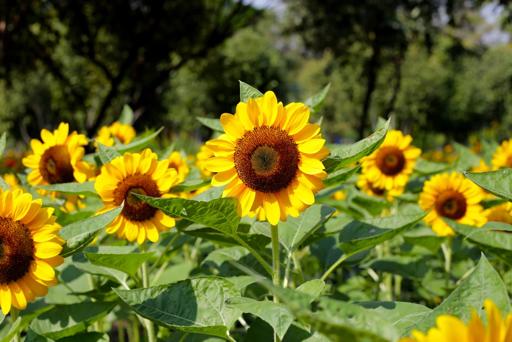Sunflower
Helianthus annuus
Also known as: Helianthus lenticularis

Growing Information
Growth Habit: Annual
Climate Requirements: Thrives in warm temperate to subtropical climates with rainfall of 500–1000 mm.
Soil Requirements: Prefers well-drained sandy loam or clay loam with pH 6.0–7.5.
Water Requirements: Moderate water needs; drought-resistant but benefits from supplemental irrigation.
Planting Instructions: Seeds are planted 2.5–5 cm deep with row spacing of 45–75 cm.
Harvesting Information: Harvested 90–120 days after planting when seed heads dry and turn brown.
Characteristics & Benefits
Plant Characteristics: Sunflower is an annual herbaceous plant with large, yellow flowers and oil-rich seeds.
Nutrient Content: Rich in vitamin E, healthy fats, protein, and antioxidants.
Health Benefits: Supports skin health, boosts immunity, and aids heart health.
Yield Information: Average yield is 1.0–3.0 tons per hectare.
Uses & Distribution
Culinary Uses: Used for sunflower oil, roasted seeds, and snack foods.
Industrial Uses: Used in biodiesel, cosmetics, and livestock feed.
Native Range: North America, particularly the central United States and Mexico.
Current Distribution: Grown in Russia, Ukraine, Argentina, the United States, and China.
Pest & Disease Management
Common Pests: Sunflower moth, cutworms, and wireworms.
Diseases: Downy mildew, rust, and verticillium wilt.
IPM Practices: Crop rotation, biological pest control, and resistant varieties.
Market Value: $480.60
Research & References
Studies and Articles: Studies on drought-resistant sunflower varieties and high-yield hybrids.
Bibliography: Sunflower Science Review, 2023.
Comments
Add CommentNo comments yet. Be the first to comment!